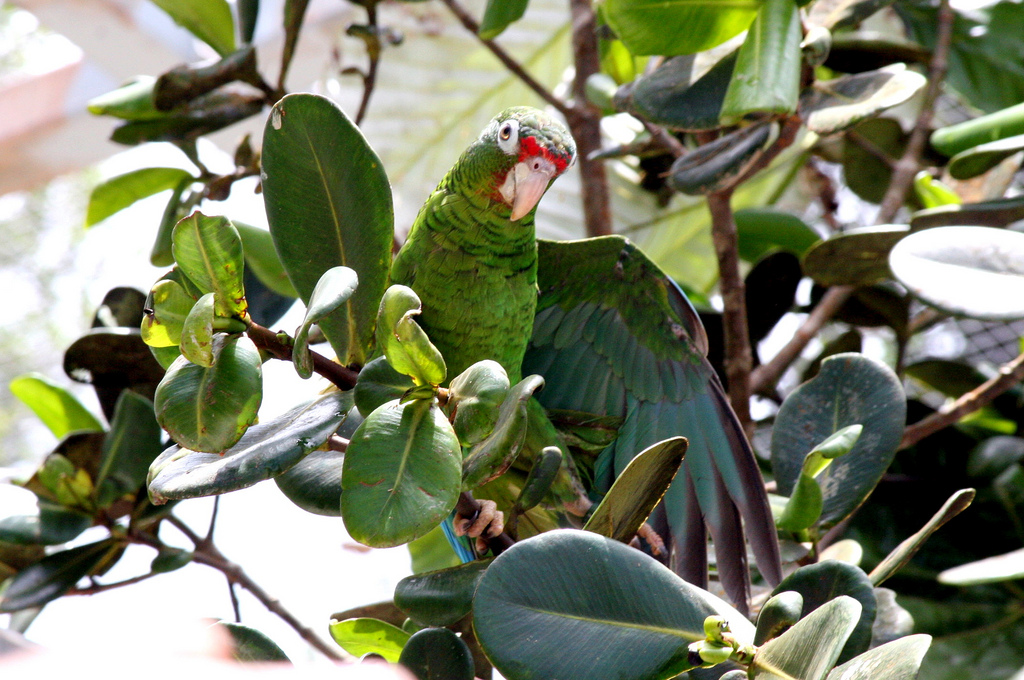
Endangered Puerto Rican parrot ceremonially released at the new flight cage of the flight cages at the Iguaca Aviary. Photo © Tom MacKenzie/USFWS, licensed Creative Commons Attribution.
Because Puerto Rico is part of the United States, local industry is subject to the same federal environmental regulations and restrictions as in the United States. Puerto Rico’s greatest environmental threats concern its vanishing natural habitat and the resulting impact on soil erosion and wildlife.Puerto Rico’s greatest environmental threats concern its vanishing natural habitat and the resulting impact on soil erosion and wildlife. Reforestation efforts are under way in many of the island’s national parks and forest reserves, and organized efforts are under way to protect and rebuild endangered wildlife populations, especially the Puerto Rican parrot, the manatee, and the leatherback sea turtle.Many of the island’s environmental protection efforts are overseen by the Conservation Trust of Puerto Rico, whose headquarters is based in Casa de Ramón Power y Girault (155 Calle Tetuán, San Juan, 787/722-5834, Tues.-Sat. 10 a.m.-4 p.m.), where visitors can peruse exhibits and pick up printed information on its projects.
In Vieques, the biggest environmental concern surrounds the ongoing cleanup of the grounds once occupied by the U.S. Navy, which stored munitions and performed bombing practice on the island. After years of protest by local residents, the Navy withdrew in 2003, but much of its land (18,000 acres) is still offlimits to the public while efforts to clear it of contaminants and the live artillery that still litters the ocean floor are under way. The cancer rate in Vieques is 27 percent higher than that of the main island, and many blame it on the presence of unexploded artillery leaking chemicals into the water and the release of chemicals into the air when the artillery is detonated, which is the Navy’s way of disposing of it.
Read more about the Puerto Rican parrot on the U.S. Fish & Wildlife Service website.×Excerpted from the Third Edition of Moon Puerto Rico.